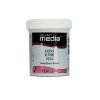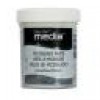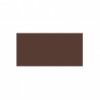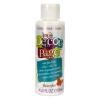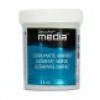I'm over at the Country View Crafts shop project blog again today with a textured background and layered paints and distress ins canvas board. You can see the texture here and if you would like the instructions as to how I made it I would be happy if you popped over to CVC Project Blog to find out.
It's Friday and another weekend but would you believe the last one in January - no I can't believe it either. here we go again.
Take care and enjoy your art.
hugs Brenda xxx
Updated - from CVC project blog
.
Updated - from CVC project blog
I am using one of my most loved canvas boards which is 5 x 7 ins in size. I have made a fairly simple textured background and then take bits from my 'left overs' box to die-cut the dapper man and create a card.
.
I began by taking a palette knife and mixing DecoArt modeling paste and white gesso together in about a 50:50 mix and then roughly spread it over the surface leaving some of the canvas board exposed and left it to dry.
Choose three colours that will tone and blend together well and not create 'mud', ie 3 warm colours, 3 cool colours or take one colour and make a tint and a shade of it to go with the original.
(In color theory, a tint is the mixture of a color with white, which increases lightness, and a shade is the mixture of a color with black, which reduces lightness. A tone is produced either by the mixture of a color with gray, or by both tinting and shading).
Take blue-green light media fluid acrylic paint, mix with water to create a very watery wash and dip the board in and dry it.
Repeat the above step with burnt umber.
Take blue-green light, mix with titanium white and drip the paint through the canvas, spritzing with water and heat drying when you are happy with it. Repeat with burnt umber mixed with titan buff.
Blend over evergreen bough distress ink, flick with water and roll dry with kitchen paper.
Repeat with vintage photo and again with evergreen bough to get depth of colours.
Give a coat of ultra matte varnish to seal the distress inks. Be very light with the brush otherwise the varnish will move the distress inks around.
Rub a coffee archival ink pad around the edges and over the high points.
Then choose the elements you want to add to make a mixed media piece of art or you could add an easel and give it as a card.
I love mixed media backgrounds, hope you like this one.
Have a great weekend.
hugs Brenda xxx
Take blue-green light, mix with titanium white and drip the paint through the canvas, spritzing with water and heat drying when you are happy with it. Repeat with burnt umber mixed with titan buff.
Blend over evergreen bough distress ink, flick with water and roll dry with kitchen paper.
Repeat with vintage photo and again with evergreen bough to get depth of colours.
Give a coat of ultra matte varnish to seal the distress inks. Be very light with the brush otherwise the varnish will move the distress inks around.
Then choose the elements you want to add to make a mixed media piece of art or you could add an easel and give it as a card.
I love mixed media backgrounds, hope you like this one.
Have a great weekend.
hugs Brenda xxx





















































